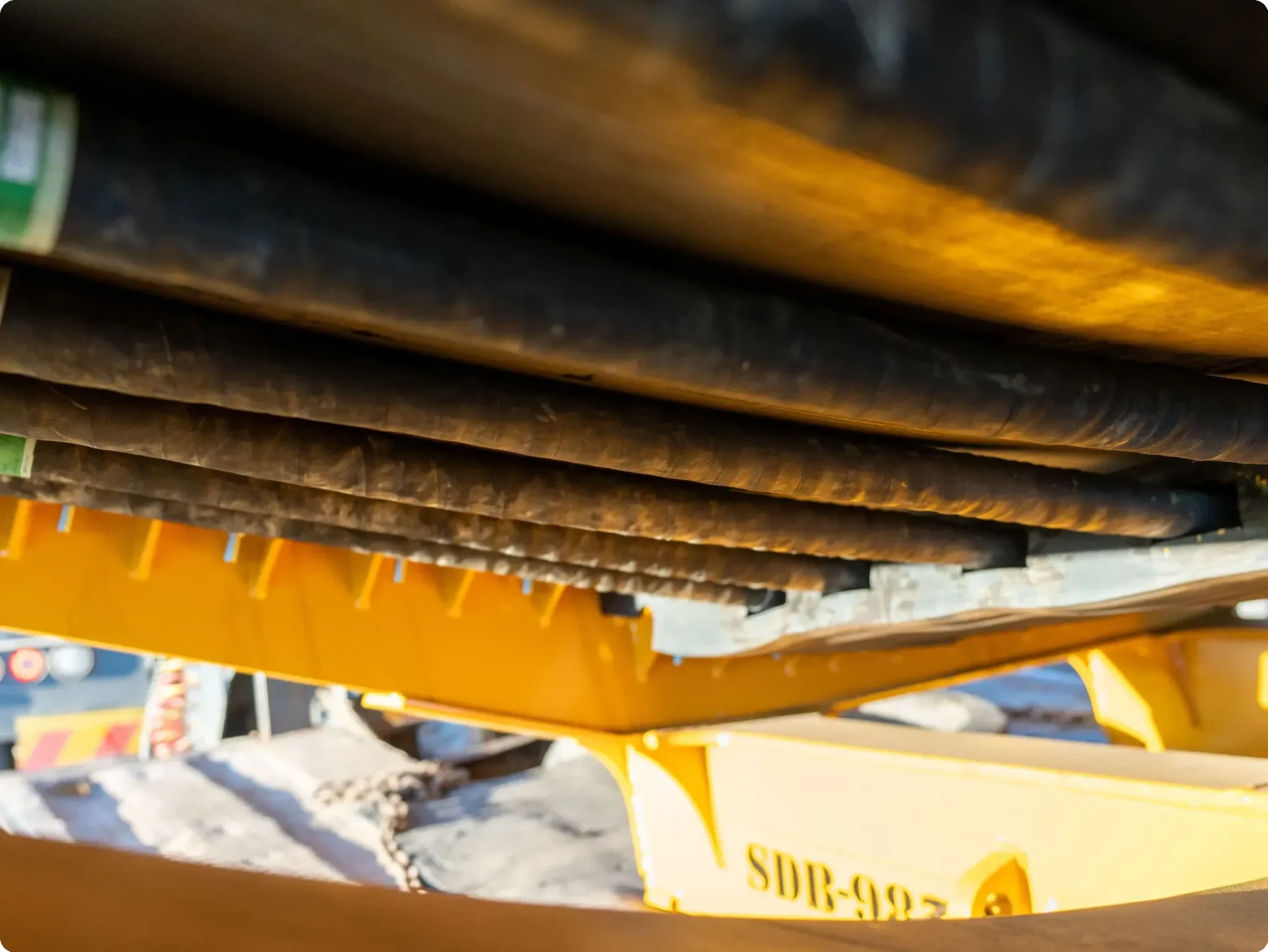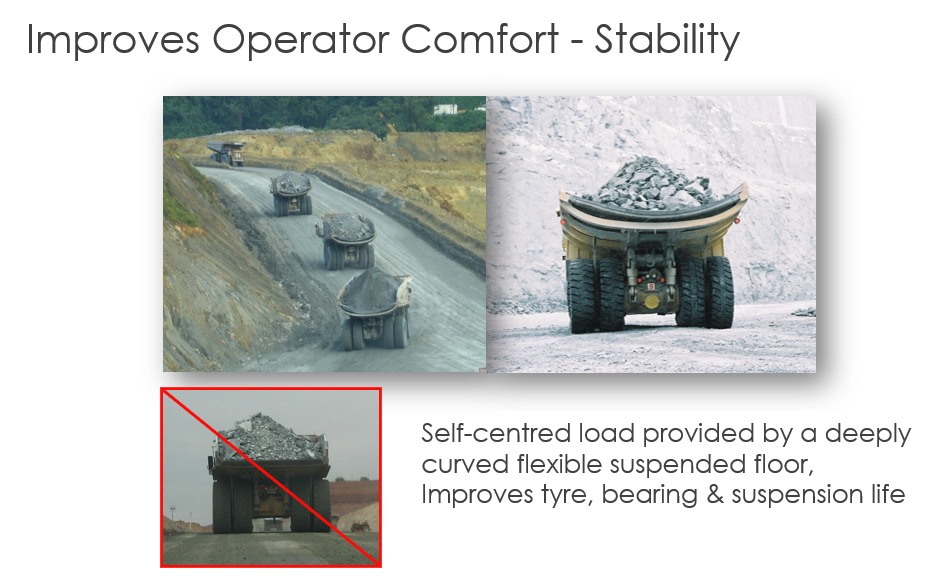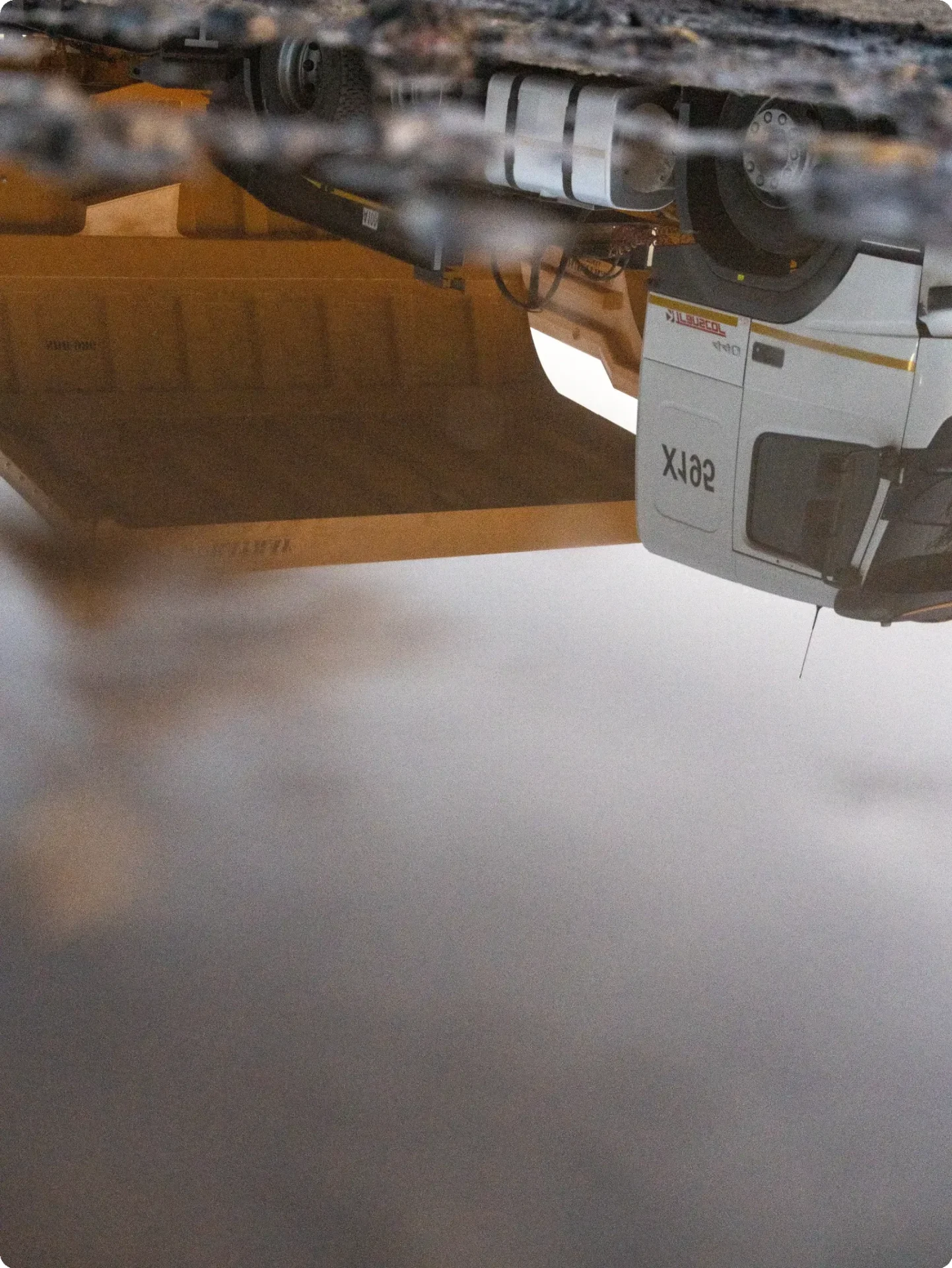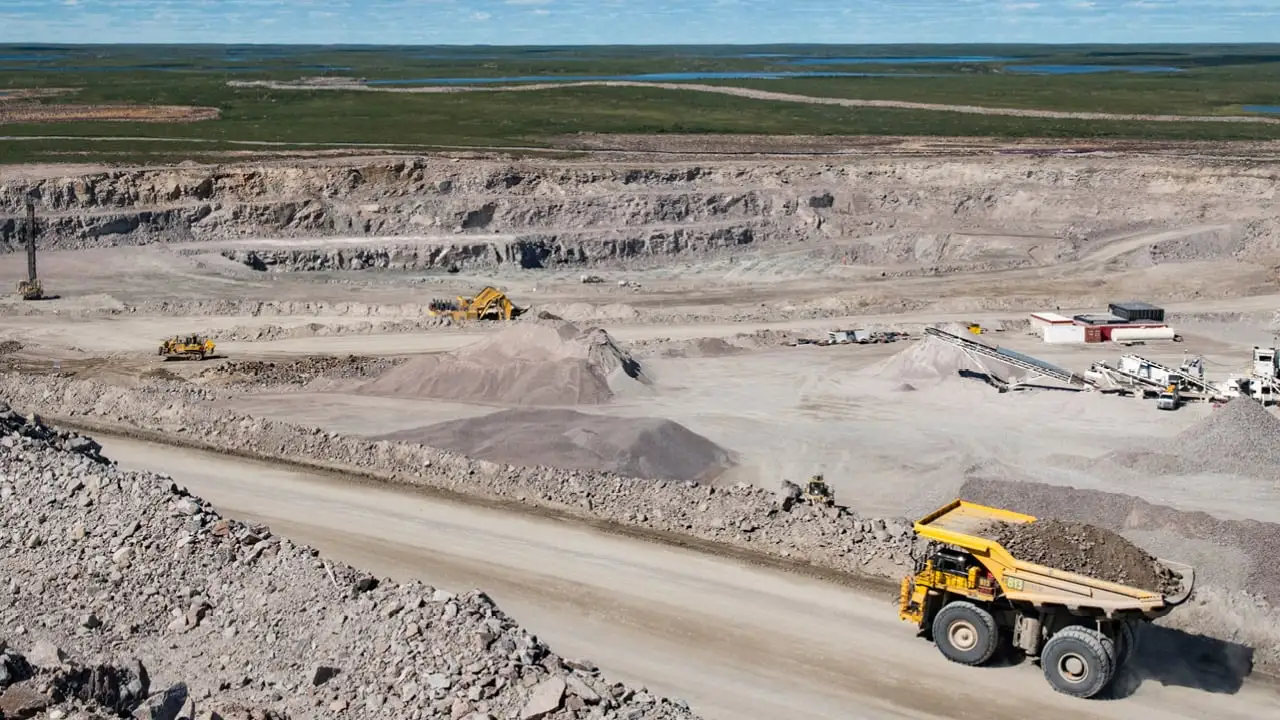
News
Duratray Suspended Dump Body: The Ultimate Guide to Safer, More Profitable Haulage – a Net Positive Financial Impact on Operations
November 14, 2025

The statistics are stark and unyielding. In the global mining industry, powered haulage remains the single greatest cause of fatalities, accounting for a devastating 40% to 50% of all mining deaths year after year. For decades, the industry has relied on administrative controls: more training, stricter procedures, and enhanced signage. Yet, the crisis persists. It is clear that a fundamental, paradigm-shifting solution is required, one that addresses the root cause of these incidents not through human compliance, but through superior engineering.
This solution exists. The Duratray Suspended Dump Body (SDB) is not merely an equipment upgrade; it is a transformative engineered safety system that is redefining the physics of mining haulage.
Duratray is an asset that drives profitability, not just an operational expense.
This comprehensive guide will explore how the Duratray SDB systematically mitigates the deadliest risks in mining, from vehicle rollovers to operator fatigue, while simultaneously delivering staggering operational and financial returns. We will delve into the compelling data that proves how profound safety improvements and enhanced productivity are not mutually exclusive goals, but are instead dual outcomes of this pioneering technology.
The Haulage Hazard Landscape: Why Conventional Solutions Are Failing
The persistent nature of powered haulage incidents points to a fundamental flaw in conventional safety strategy. Relying on procedural controls to manage risks rooted in physics and human physiology has proven to be inadequate. The problem is particularly acute in surface mining, where the immense scale of equipment creates a high consequence environment. Consider that a single 220 tonne haul truck can generate a ground force of over six hundred eighty thousand, three hundred eighty-eight point five five five kilograms (680,388.555 kg). Within this context, the primary causes of incidents are clear:

- Dynamic Stability and Load Centering The Suspended Dump Body helps the load of a laden haul truck to be centered due to the suspended and curved floor. This helps avoid overloading the left or right tyres, axels etc.
- Operator Impairment from Whole Body Vibration (WBV): The operator’s cab is the epicentre of a constant assault of shocks and vibrations. Research from NIOSH shows a direct link between prolonged WBV exposure and chronic health issues, including debilitating low back pain and musculoskeletal disorders. This is not a comfort issue; it is a critical safety crisis. A fatigued, pain riddled operator has slower reaction times and diminished situational awareness, directly increasing the probability of a serious error.
- Catastrophic Structural Failure: The brutal, cyclical shock loads from loading a conventional steel body impart massive stress on the truck’s chassis. Over millions of cycles, this leads to metal fatigue and the potential for sudden, catastrophic failure, creating a direct hazard and triggering high risk emergency maintenance projects.
These risks are deeply interconnected. The violent shock load from loading is the root cause that initiates a dangerous cascade, affecting both the machine’s integrity and the operator’s fitness for duty. An engineering control that interrupts this initial energy transfer can therefore mitigate the entire risk profile holistically.
A Foundational Shift: The Engineering Philosophy of the Duratray SDB
The conventional steel dump body operates on a simple, rigid principle: resist the impact. It functions as an anvil, transferring the destructive kinetic energy of a 50 tonne rock drop directly into the truck’s chassis and, critically, the operator’s cab.
The Duratray Suspended Dump Body is engineered from a completely different, more sophisticated philosophy: absorption and dissipation, not resistance.
Imagine replacing that solid anvil with a purpose built, industrial scale shock absorber. This is the core function of the SDB. It transforms the dump body from a passive container into an active safety system that manages energy, fundamentally altering the haulage environment for both man and machine.
Deconstructing the Technology: How the SDB Works
The revolutionary performance of the Duratray SDB stems from the synergistic interaction of three key components:
- The Rubber Wear Mat: This is not a simple liner. It is the primary load bearing surface, constructed from a proprietary, abrasion resistant rubber compound engineered to flex under impact. Duratray specifies that the mat is designed to last between 35,000 to 50,000 hours, depending on material abrasiveness.
- The Elastomeric Suspension Ropes: The mat is suspended by a network of high strength synthetic ropes, each with a documented minimum breaking strength of 45 tonnes. These ropes are anchored to the frame and are the key to the system’s three dimensional energy dissipation.
- The High Strength Steel Frame: Relieved of the majority of impact forces, the surrounding frame can be engineered to be lighter and stronger, often using advanced high strength steels.
This unique “frame and hammock” design allows the system to catch the load, with the mat flexing and the ropes stretching to dampen the impact force before it can propagate through the vehicle structure. It is a direct physical manifestation of the “safety by design” philosophy championed by industry bodies like EMESRT, moving the industry up the hierarchy of controls from administrative measures to the most effective level: hazard elimination through engineering.
Quantifying the Safety Revolution: Data Driven Risk Reduction
The theoretical benefits of the SDB’s design are validated by a substantial body of instrumented, real world data that quantifies its direct impact on the primary risk factors in haulage operations.
1. Enhancing Operator Fitness for Duty: The War on Vibration and Noise
The most immediate benefit of the Duratray SDB is its profound improvement of the operator’s environment. Comparative, instrumented trials provide unequivocal proof.
Table 1: Operator Exposure Analysis: SDB vs. Steel Body
| Metric | Standard Steel Body | Duratray SDB | Improvement |
|---|---|---|---|
| Health Weighted WBV | 0.611 m/sec² | 0.259 m/sec² | 58% Reduction |
| EU Safe Exposure Time | 5.38 hours | 29.81 hours | 454% Increase |
| In Cab Noise Level | 92.3 dB(A) | 86.8 dB(A) | 5.5 dB(A) Reduction |
Source: Instrumented field tests documented by Duratray.
What does this data mean in practice? The reduction in Whole Body Vibration is a game changer for operator health and safety. Under the EU Directive on vibration exposure, the SDB increases the safe operating time from less than a standard shift to nearly 30 hours. This ensures operators remain within safe health limits for their entire roster, drastically reducing the cumulative physical toll and the associated cognitive impairment that leads to errors.
Furthermore, the 5.5 dB(A) noise reduction represents an approximate 64% drop in perceived loudness. This creates a quieter, less stressful cabin that enhances focus and critical communication.
2. Engineering Stability: A Proactive Approach to Enhanced Stability
The Duratray SDB enhances vehicle stability through several key design characteristics:
- Lower Centre of Gravity: The SDB is typically 10 – 20% lighter than a steel counterpart, directly lowering the vehicle’s centre of gravity and improving its inherent resistance to tipping.
- Load Dampening: The flexible “hammock” design encourages the payload to settle and centralise. Most importantly, it actively dampens the lateral forces of a shifting load, absorbing the energy that would otherwise cause a violent lurch, the primary initiator of many accidents.
3. Eliminating High Risk Tasks by Design
The SDB’s design eliminates entire categories of hazardous work, aligning with the highest principles of the safety hierarchy.
- The End of Manual Clean Up: Carryback, where material adheres to the dump body, is a major hidden risk. Steel bodies can retain up to 35% of their payload, requiring personnel to perform the dangerous task of manual cleaning, often at height. The SDB’s flexible rubber floor, in constant motion during tipping, breaks this bond, reducing carryback to less than 3%. Duratray’s internal studies show this can result in a potential production increase of over 6,000 tonnes per truck per year by maximising effective payload on every cycle.
- Transforming Maintenance: Repairing a cracked steel body is a long, hazardous project involving weeks of hot work. In contrast, SDB maintenance is a planned, controlled procedure. A full rubber mat replacement, a bolt in, bolt out process, can be performed by a crew of 3 4 people in under 24 hours, drastically reducing crew exposure to high risk activities.
The Powerful Synergy: How Safety Drives Operational Excellence
The most compelling argument for the Duratray Suspended Dump Body is that its safety features are the direct drivers of staggering operational and financial gains. This is not a trade off; it is a powerful synergy.
Case Study: Anglo American’s New Vaal Colliery
A landmark study at Anglo American’s New Vaal Colliery provides quantifiable evidence of this synergy, comparing identical trucks operating under the same conditions.
Table 2: Anglo American New Vaal Colliery Performance Metrics
| Performance Metric | Standard Steel Body | Duratray SDB | Change |
|---|---|---|---|
| Average Payload | 44.65 tonnes | 58.39 tonnes | +30.7% |
| Diesel Consumption | 125 L/h | 102 L/h | -23 L/h (18.4%) |
| Carryback Rate | Up to 35% | < 3% | >90% Reduction |
| Trips for 1M Tonnes | 22,396 trips | 17,126 trips | 5,270 fewer trips |
Source: Anglo American New Vaal Colliery comparative study.
The safety implications of this data are profound. A 30.7% increase in payload means 30.7% fewer haul cycles are required to move the same total tonnage. This translates directly into a massive reduction in the fleet’s total “time at risk.” Fewer hours on haul roads, fewer loading events, and fewer interactions with other vehicles and personnel statistically and significantly reduce the opportunity for a collision or incident. This case study proves that the Duratray SDB makes operations simultaneously safer and more efficient.
The Strategic Investment: Total Cost of Ownership Analysis
Viewing the Duratray SDB through the lens of initial purchase price is a critical error. A true evaluation must consider the Total Cost of Ownership (TCO), where the SDB demonstrates an undeniable advantage.
Table 3: Comparative Lifecycle Cost Analysis (Ultra Class Haul Truck)
| Cost/Benefit Category | Standard Steel Body | Duratray SDB | Net Change |
|---|---|---|---|
| Maintenance OPEX | $13.10 / h | $5.50 / h | 58% Reduction |
| Major Overhaul Interval | ~9 months | 35 40 months | ~300% Longer Life |
| Major Overhaul Downtime | Up to 6 weeks | 1 2 days | ~95% Reduction |
| Tire Life | Baseline | +10% to +15% | Significant Cost Saving |
Source: Duratray operational data and field performance reports.
The financial argument is clear. The substantial savings in maintenance, fuel, and tyres, combined with the revenue generating power of increased payload and availability, create a rapid return on investment. The Duratray SDB is not a cost; it is a profit centre that pays for itself while making the operation profoundly safer.
Future Proofing Your Mine: The SDB, ESG, and the Digital Mine
The Duratray SDB is not just a solution for today’s challenges; it positions a mining operation for future success in two critical areas: ESG performance and digital transformation.
Elevating Your ESG Profile:
- Environmental: Lower fuel consumption (5 10 litres per hour is common) directly reduces greenhouse gas emissions. The extended asset life and reduced steel repairs contribute to waste reduction and resource conservation.
- Social: The drastic reduction in noise and dust improves community relations and strengthens the social license to operate. The quantifiable commitment to operator health and safety is a powerful statement to stakeholders and investors.
Enabling the Digital and Autonomous Mine:
The violent shocks of a steel body introduce significant “noise” into the data collected by onboard sensors. This corrupts the data fed into predictive maintenance algorithms and fleet management systems. The Duratray SDB’s smoother, dampened operation provides a stable mechanical process, resulting in cleaner, more reliable data streams. This high fidelity data is the essential foundation for the effective deployment of AI, machine learning, and truly successful autonomous haulage systems.
Conclusion and Strategic Implementation Framework
The evidence is unambiguous. The Duratray Suspended Dump Body is a foundational engineering control that directly confronts the mining industry’s most persistent safety crisis. It systematically mitigates the risks of dynamic instability, operator impairment, and structural failure through a fundamental redesign of the haulage process.
The technology’s value proposition is unrivalled because it creates a virtuous cycle. Profound safety improvements, such as the 58% reduction in Whole Body Vibration and the elimination of high risk maintenance, are the very drivers of staggering operational gains, including 30%+ payload increases and 58% lower maintenance costs.
For any mining organisation committed to achieving Zero Harm, the adoption of the Duratray SDB must be a strategic priority. We recommend the following implementation framework:
- Initiate a Pilot Programme: Select a specific truck fleet or a challenging operational area for a pilot deployment of SDBs to validate performance claims in your unique context.
- Establish Site Specific KPIs: Before the pilot, define clear Key Performance Indicators. These should include safety metrics (in cab WBV, operator feedback) and operational metrics (payload, fuel use, maintenance downtime).
- Conduct a Rigorous TCO Analysis: Use the data from your pilot to build a site specific Total Cost of Ownership model with the help of Duratray. This will provide the definitive, internal business case for a fleet wide rollout.
Ultimately, investing in the Duratray Suspended Dump Body is a powerful declaration of a proactive safety culture. It is a move away from reacting to incidents and towards engineering hazards out of existence. It builds a mining operation that is not only safer and more resilient, but also more productive and profitable for the long term.
The Haulage Hazard: Engineering a Proactive Solution to Mining’s #1 Killer
Frequently Asked Questions (FAQs)
1. How does the Duratray SDB actually reduce Whole Body Vibration for the operator? The Duratray SDB reduces Whole Body Vibration through its patented suspended design. The flexible rubber mat and elastomeric ropes act as a massive shock absorber, capturing and dissipating the kinetic energy from loading impacts before it can be transmitted through the truck’s chassis and into the operator’s cab. Instrumented tests show this system reduces health weighted WBV by 58%, dramatically increasing safe exposure times.
2. Is the Duratray SDB compatible with haul trucks from different manufacturers? Yes, the Duratray Suspended Dump Body is engineered to be fully compatible with ultra class haul trucks from all major Original Equipment Manufacturers (OEMs), including Caterpillar, Komatsu, Hitachi, and Liebherr. Each SDB is custom designed and built to integrate seamlessly with the specific model of truck.
3. We are focused on our ESG performance. What benefits can the SDB provide? The Duratray SDB offers significant ESG advantages. Environmentally, it lowers fuel consumption and associated carbon emissions, while its longer life reduces waste. Socially, it improves operator health and safety (a key social metric), reduces community noise and dust, and eliminates high risk manual cleaning tasks, strengthening your social license to operate.
4. Can the Duratray SDB really increase payload, and if so, how? Yes, payload increases of 10 – 30% are well documented, as seen in the Anglo American case study with a 30.7% gain. This is achieved through two main factors: the SDB’s lighter weight itself allows for more payload within the truck’s Gross Vehicle Weight limit, and the near total elimination of carryback ensures the full rated load is discharged every cycle, making every trip more efficient.
5. How does the maintenance cost and downtime for an SDB compare to a steel body? The difference is dramatic. Data shows the SDB reduces maintenance operating costs by 58% ($5.50/h vs. $13.10/h for steel). Furthermore, while a major steel body overhaul can take up to six weeks, replacing the SDB’s modular rubber mat is a planned procedure completed in one to two days, resulting in a 95% reduction in downtime and a 300% longer service interval.



